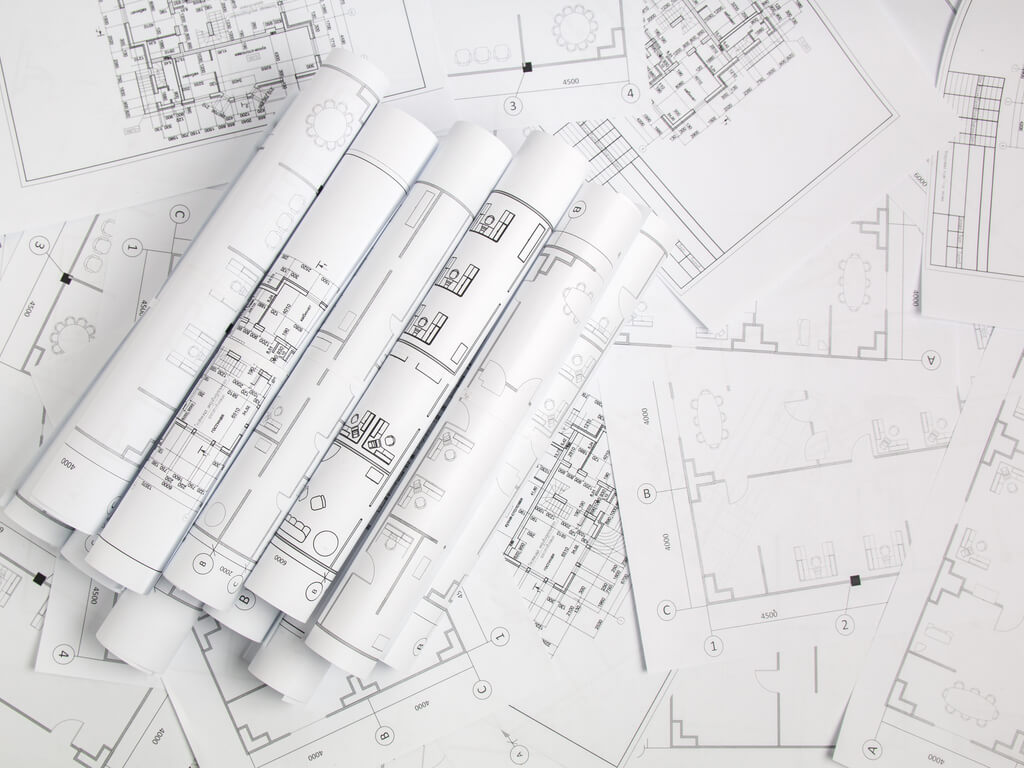The following material is provided for informational purposes only. Before taking any action that could have legal or other important consequences, speak with a qualified professional who can provide guidance that considers your unique circumstances.
Perhaps you’ve already faced this type of situation: One of your best clients comes to you with a special request. He has a set of construction plans ready to go for a new mixed-use project combining retail and residential space. The problem is, the designer of those plans is not licensed to practice in your state.
Your client wants to know if you would be willing to sign, stamp and seal the drawings for him. He says he will make it worth your while to spend a few hours looking over the construction documents and, assuming you don’t find significant design errors or other problems, it should be a quick and easy task. If you do find some design details you’re not comfortable with, the original designer will be available for consultation and to make any revisions required.
So what do you say? Your client would certainly appreciate you providing this simple service. And you could refuse to sign, stamp or seal the plans if you did find any major problems. Should be a no-brainer, right?
Wrong! Signing, stamping and sealing construction documents created by another designer presents significant liabilities for your design firm as well as personal liability for the architect or engineer whose stamp appears on the plans. We’re talking about professional liability for any alleged errors or omissions in the plans you have signed, stamped and sealed as well as the potential suspension or loss of your license to operate as a designer. You also face fees and penalties for signing, stamping and sealing plans that you or your charges did not create.
That’s not to say that you can never sign, stamp or seal a set of plans that you did not personally create. It’s just that there are very tight restrictions in place that limit what you can sign, stamp and seal.
Who Sets the Rules?
In the U.S., rules and regulations regarding the do’s and don’ts of signing, stamping and sealing design and construction documents (as a group referred to as “technical submissions”) are set at the state level. Fortunately, there is a nationwide body that has established general recommendations that individual states can turn to and create some semblance of uniformity across the U.S. This body is the National Council of Architectural Registration Boards, or NCARB.
NCARB is a nonprofit organization made up of architectural registration boards from all 50 states in the U.S. as well as in the District of Columbia, Puerto Rico, Guam, the US Virgin Islands and the Northern Mariana Islands. NCARB’s mission is to assist members in carrying out their duty to protect the health, safety and welfare of the general public. (Canada has a similar organization called the Canadian Architectural Licensing Authorities (CALA), which shares a Mutual Recognition Agreement with NCARB.)
NCARB’s guidelines regarding signing, stamping and sealing technical submissions are included in its “Rules of Conduct.” According to Rule 5, an architect may sign and seal technical submissions only if they were prepared by:
- The architect;
- Persons under the architect’s responsible control;
- Another architect registered in the same jurisdiction if the signing and sealing architect has reviewed the other architect’s work and either has coordinated the preparation of the work or has integrated the work into his/her own technical submissions; or
- Another architect registered in any United States jurisdiction and holding the certification issued by NCARB if (a) the signing and sealing architect has reviewed the other architect’s work and has integrated the work into his/her own technical submissions and (b) the other architect’s technical submissions are prototypical building documents.
An architect may also sign, stamp and seal drawings, specifications, or other work which is not required by law to be prepared by an architect if the architect has reviewed such work and has integrated it into his/her own technical submissions.
According to Rule 6 of NCARB’s Rules of Conduct, every registered architect shall have a seal of a design authorized by the Board by regulation. All technical submissions prepared by such architect, or under his/her responsible control, shall be stamped with the impression of his/her seal, which shall mean the architect was in responsible control over the content of such technical submissions during their preparation and has applied the required professional standard of care.
“Responsible control” is a key phrase when striving to comply with NCARB’s rules and state laws. Generally, responsible control is defined as the amount of control over and detailed professional knowledge of the content of technical submissions during their preparation as is ordinarily exercised by architects applying the required professional standard of care.
Alternately, reviewing or correcting technical submissions after they have been prepared and completed by another designer does not constitute responsible control. This is because the reviewer has neither control over nor detailed knowledge of the content of such submissions during their preparation. Any registered architect signing, stamping or sealing technical submissions not prepared by that architect but prepared under the architect’s responsible control by persons not regularly employed in the office where the architect is resident, shall maintain and make available to the board upon request for at least five years following such signing, stamping and sealing adequate and complete records demonstrating the nature and extent of the architect’s control over and detailed knowledge of such technical submissions throughout their preparation.
Also, any registered architect signing, stamping or sealing technical submissions integrating the work of another architect into the registered architect’s own work as permitted under clauses (iii) or (iv) of Rule 5 shall maintain and make available to the board upon request for at least five years following such signing, stamping and sealing, adequate and complete records demonstrating the nature and extent of the registered architect’s review of and integration of the work of such other architect’s work into his/her own technical submissions, and that such review and integration met the required professional standard of care.
As you can likely tell, NCARB does not look fondly upon the practice of “plan-stamping” as a revenue generator for A/E firms. That is, it is considered inappropriate and likely illegal (as many court cases have shown) to sign technical submissions for which you have not exercised substantial control. Simply reviewing a completed set of plans created by other designers without your significant involvement is insufficient to meet NCARB’s Rules of Conduct. And in many jurisdictions, such actions will be considered illegal and subject to fines, suspensions and other penalties.
Here’s where things get a little tricky. Although NCARB’s Rules of Conduct create some level of uniformity among the 50 states and territories of the U.S., each state sets its own rules, regulations and requirements for practicing as a design professional within its jurisdiction. That means, rules of conduct regarding signing, stamping and sealing technical submissions can differ from state to state.
As an example, in one state, a firm principal can stamp and seal construction documents prepared under the supervision of another licensed architect in the firm if that licensed architect reports to or is managed by that principal. This enables firms to establish a policy that firm principals can sign, stamp and seal construction documents, even if that principal was not in day-to-day control of the design team for this project. This is a common policy of large firms in states that allow such signing, stamping and sealing.
In another state, the right to sign, stamp and seal cannot be delegated. Only the design professional in responsible charge of the project team can affix a stamp/seal. This requirement often causes non-principals to take on that responsibility — and associated risks.
Establishing a Stamping and Sealing Policy
Regardless of the jurisdictions in which you practice, it is important for all architectural and engineering companies to set and communicate company policy for handling the responsibility for signing, stamping and sealing construction documents and other technical submissions. That begins by identifying the rules and regulations in your state, province or other jurisdictions in which you practice regarding the rights and responsibilities of signing, stamping and sealing.
Ask your legal counsel to assist you in investigating these matters. Your state and local professional associations can also be of assistance, as can your insurance agent or broker. Finally, NCARB, CALA and your state or province licensing board may be able to provide pertinent information.
Once you’ve identified and confirmed the relevant rules and regulations regarding signing, stamping and sealing documents in your jurisdiction(s), draft a company policy that complies. Identify who can and cannot sign, stamp and seal documents on the company’s behalf. As specifically as you can, define “responsible charge,” “coordination,” preparation,” “integration,” “technical submissions,” and other pertinent terms to make it as clear as possible who can and cannot perform these important tasks. Have legal counsel review and approve your policy.
Make it clear that your company is not in the business of stamping and sealing others’ documents if you don’t meet the criteria of “responsible charge” in your jurisdiction. Identify criteria for the types of projects where you might sign, stamp and seal documents created by others assuming your services meet the threshold of responsible charge.
Identify those in your firm who can sign, stamp and seal and make sure they are well versed in what they can and cannot do. Also educate them on the potential liabilities they face if they sign, stamp or seal documents that do not meet your policy requirements.
As previously noted, even where licensed design professionals and company principals meet the state requirements for signing, stamping and sealing they may face professional and personal liability claims should there be design errors or omissions in the plans. You might consider adding an affirmative statement in your company personnel manual that your firm indemnifies the licensed design professional for claims that arise out of the act of signing stamping and sealing documents as long as that act is consistent with the individual’s duties and responsibilities authorized by the firm. This indemnity should be backed up by professional liability (PL) insurance acknowledging proper individual duties and responsibilities which are afforded PL coverage.
Can We Be of Assistance?
We may be able to help you by providing referrals to consultants, and by providing guidance relative to insurance issues, and even to certain preventives, from construction observation through the development and application of sound human resources management policies and procedures. Please call on us for assistance. We’re a member of the Professional Liability Agents Network (PLAN). We’re here to help.


